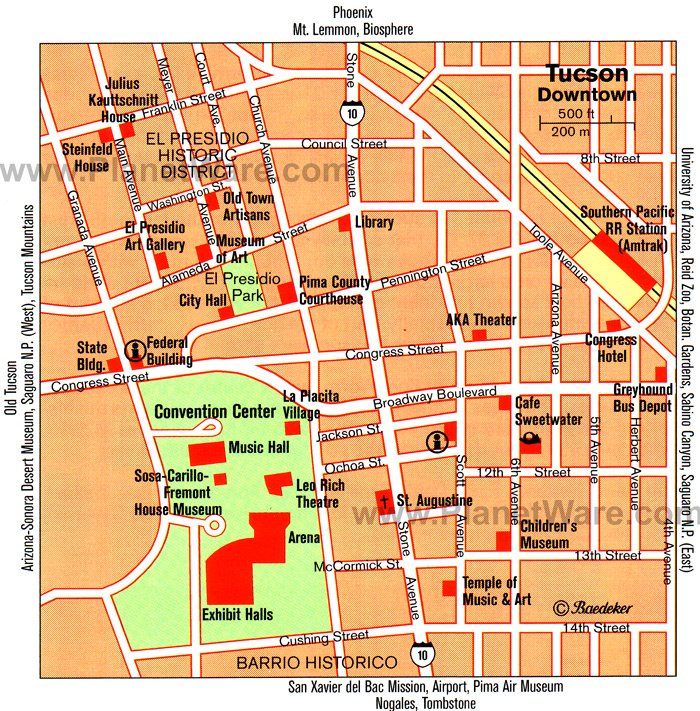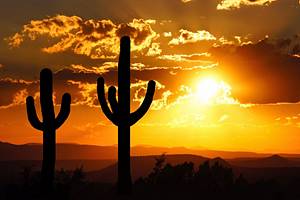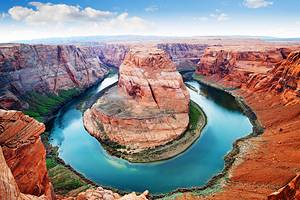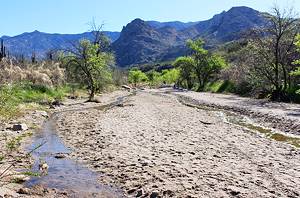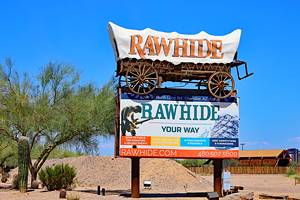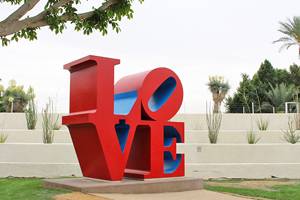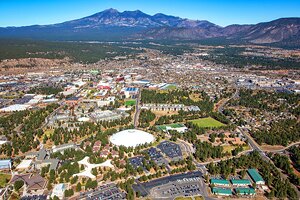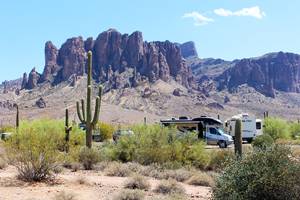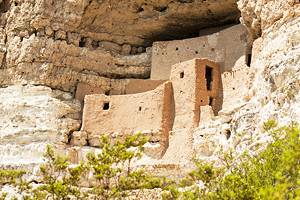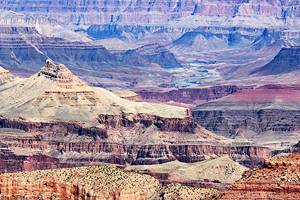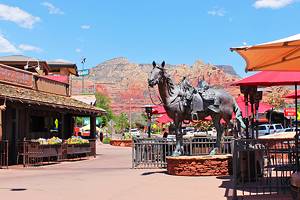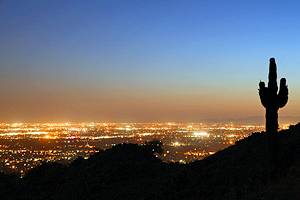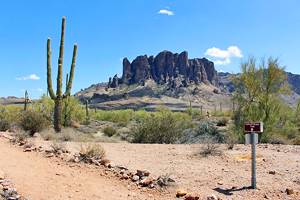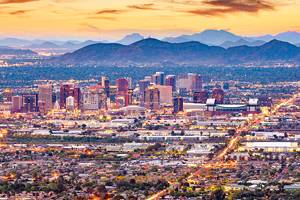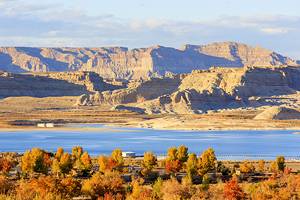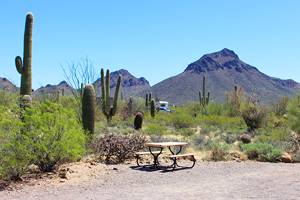Tourist Attractions in Tucson, AZ
Authors Michael and Lana Law have spent many winters in Arizona, visiting towns and cities around the state.
Tucson, the "City of Sunshine," offers a pleasant mix of cultural and natural attractions to keep visitors busy, but it's primarily the warm, dry climate that attracts tourists and snowbirds to the area. Basking in the sun holds its own appeal, as does golfing during the winter months, or lounging by a pool at one of Tucson's luxury resorts.
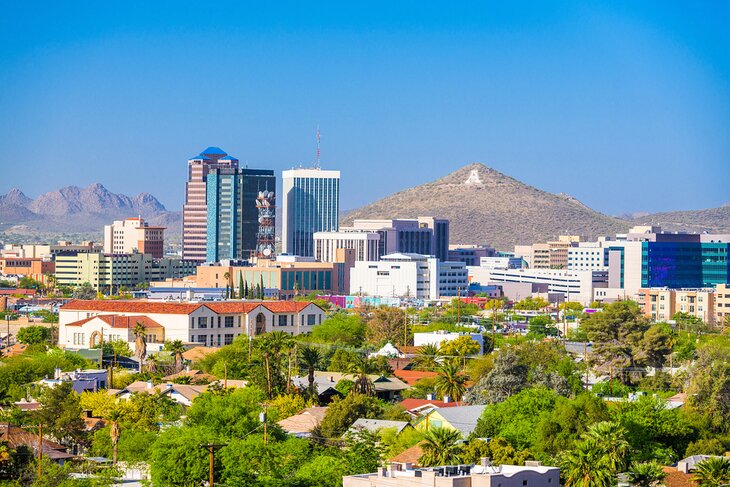
The city is home to interesting museums, historical sites, and great shopping and dining. The surrounding mountains and desert provide a playground for people looking for things to do outdoors, with beautiful parks, wonderful hiking trails, biking trails, campgrounds, and some incredible scenic drives.
Tucson also makes a great base for day trips to nearby small towns like the historic Western town of Tombstone; the mining town o`f Bisbee; and the little community of Tubac, an artists' colony with interesting shops selling art and trinkets.
Figure out which places to visit with our list of the best attractions and things to do in Tucson.
Visit the Arizona-Sonora Desert Museum
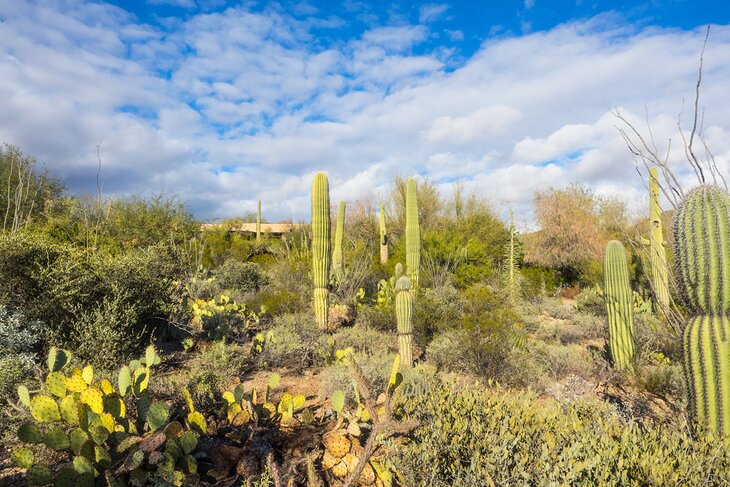
The Arizona-Sonora Desert Museum offers an intimate look at the desert landscape around Tucson. This museum is a wonderful family outing with a zoo, natural history museum, and botanical garden all in one.
Displays showcase living animals and plants native to the Sonoran Desert, including some endangered species such as the Mexican wolf, thick-billed parrot, ocelot, margay, jaguarundi, desert pupfish, Sonora chub, bonytail chub, razorback sucker, and Gila topminnow.
As you wander the footpaths, keep an eye for the busy and colorful hummingbirds whizzing about from flower to flower. Approximately 40,000 plants representing 1,200 species can be seen here. Rock hounds will be in their element exploring the gem, mineral, and fossil collections.
One of the most popular things to do is watch the live animal presentations, including the Raptor Free Flight, with hawks flying over the audience. Afterwards, information on the birds is provided, and an opportunity to see them close up.
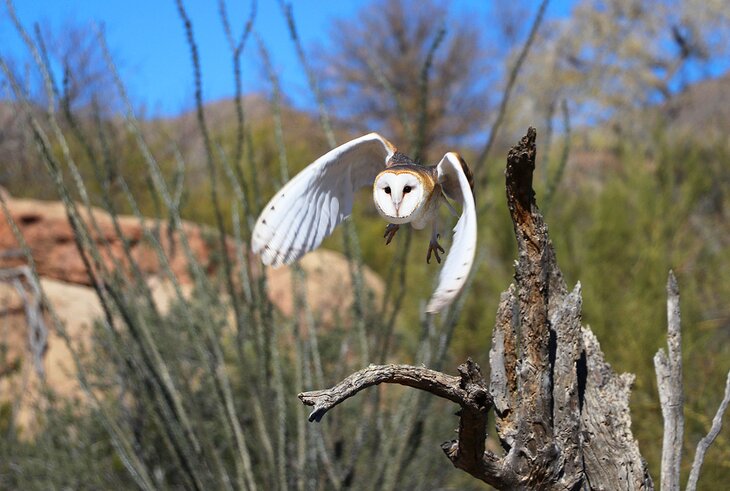
Things you might not expect to find at a museum focused on the desert can also be viewed here, like a stingray touch tank; an aquarium with 14 tanks showcasing the aquatic life of the desert; and the Gulf of California along with the Riparian Corridor area featuring river otters, bighorn sheep, and beavers.
If the younger set in your traveling crew need a break or want to burn off a bit of energy, swing by the Packrat Playhouse. This is one of the newest attractions at the Arizona-Sonora Desert Museum, and consists of an air-conditioned room complete with desert animal-themed play structures.
Kids can crawl through a giant snake, see an oversized tarantula, and play on a huge rope net. Picnic tables are available for parents to rest and watch all the action.
Address: 2021 North Kinney Road, Tucson, Arizona
Drive Mount Lemmon Scenic Byway
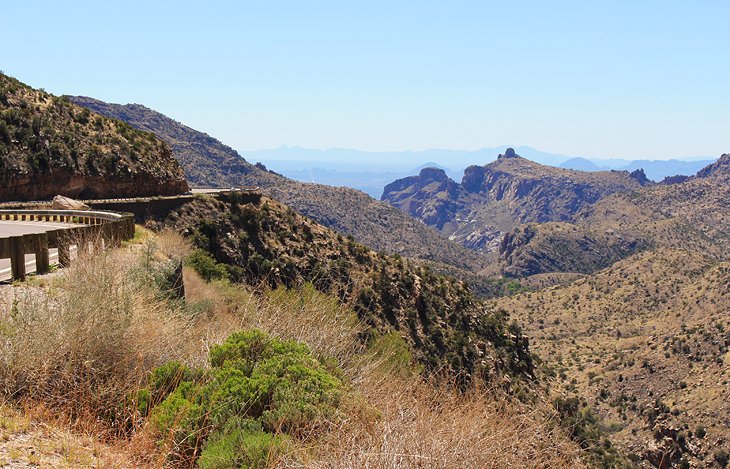
If you are looking for a break from the city and interested in a beautiful drive, take the time to drive the Mount Lemmon Scenic Byway. Starting approximately 15 miles outside of Tucson, this route is one of the must-do attractions in the Tucson area.
This 27-mile one-way road winds its way up the Santa Catalina Range on the Catalina Highway, and allows you to experience several completely different ecosystems in a short period of time. It also provides some of the most spectacular views out over the surrounding mountains and valleys.
A cool escape from Tucson's heat, the drive will take you from a dry desert floor with cacti right up to towering pine trees, small streams, and beautiful lakes. At the top is the small community of Summerhaven. A tradition for many families, and one you may want to try while in town, is a stop in at the Mount Lemmon Cookie Cabin for one of their signature giant cookies, an ice cream, or a slice of pizza.
Just five minutes past Summerhaven is Mount Lemmon Ski Valley. This ski resort is open all year for sightseeing. Another popular pastime is to stop in here as part of your journey and ride the double chairlift to the top. Up here you'll be treated to incredible views out over the Santa Catalina mountains.
Several wonderful campgrounds are located along the way, as are some challenging hikes into the backcountry. The road is well engineered and not a scary drive, and plenty of lookouts with large parking areas are located at strategic stopping points. Road bikers relish the challenge of climbing the inclines and racing back down, keep an eye out for their brightly colored jerseys.
The Catalina Highway is also known as the Hitchcock Highway or Sky Island Parkway. Count on at least two hours, but an entire afternoon with a picnic lunch would be ideal.
Pima Air and Space Museum
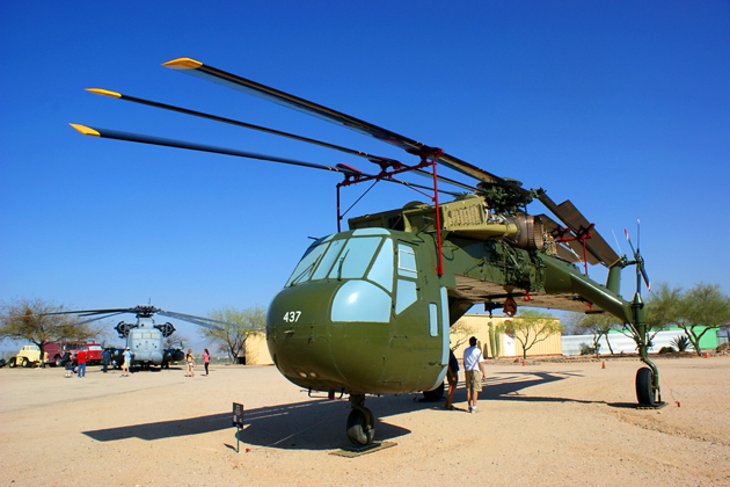
The Pima Air and Space Museum is the largest privately funded air museum in the world, with more than 400 aircraft and spacecraft. The collection includes historical aircraft, as well as some of the most advanced models. Featured attractions include John F Kennedy's presidential plane and a replica of a 1903 Wright Brothers Flyer.
A couple of the newest additions are a Boeing 787 Dreamliner and the Orbis DC 10 Flying Eye Hospital. In addition to the aircraft, the museum is also home to over 125,000 flight-related artifacts, including a moon rock.
The planes are spread out over 80 acres and six hangars, and tram tours (not included in admission fee) are led by knowledgeable guides. For an additional fee, visitors can also take a bus tour to the adjacent "Boneyard," the 309th Aerospace Maintenance and Regeneration Center. To visit this area, requests have to be made 10 days in advance via the website.
The larger planes at the Pima Air and Space Museum are outdoors, so plan your visit early in the day during the hotter months.
Address: 6000 East Valencia Road, Tucson, Arizona
See the Desert at Saguaro National Park
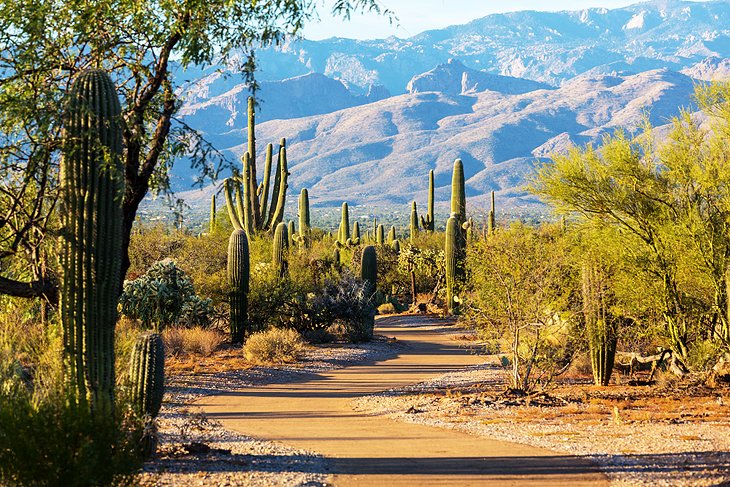
Saguaro National Park offers an easy opportunity to see and experience the Sonoran Desert, east and west of Tucson. Here, you can see the signature saguaro cactus, which are the tallest species in North America.
Hiking trails run through the park and offer good opportunities to spot wildlife. Some of the animals and reptiles that call the desert home include Gila woodpeckers, cactus wrens, desert tortoises, jackrabbits, and Gila monsters (lizards).
The park is divided into two sections: the more popular Saguaro East—Rincon Mountain District and Saguaro West—Tucson Mountain District. Each area is different in its own way.
Saguaro East is easily accessible and has a beautiful, paved, rolling, scenic drive with short hikes. Saguaro West is a bit farther out but retains more of the rugged beauty and has longer and more spectacular hikes, but the scenic drives are on gravel roads. If you are camping, the nearby Gilbert Ray Campground is a great spot.
Your paid admission or park pass is good for both areas, and it takes about an hour to transit between both divisions.
Address: 3693 South Old Spanish Trail, Tucson, Arizona
Mission San Xavier del Bac
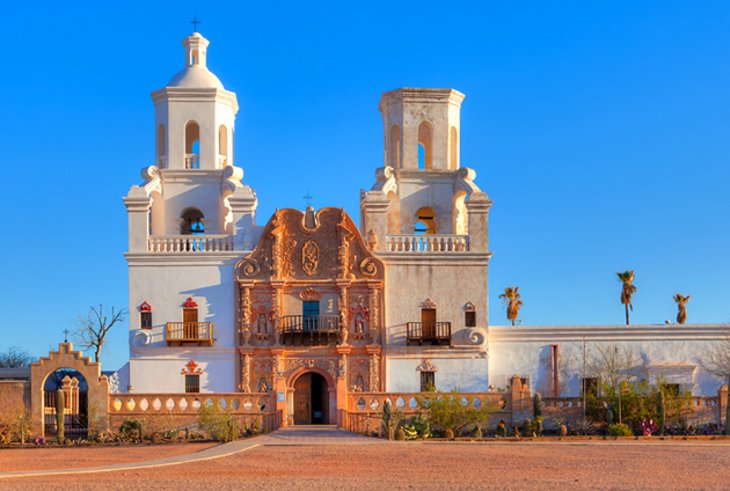
Known as the "White Dove of the Desert," San Xavier del Bac mission station in the southwest of Tucson was established by Spanish Jesuits in 1770.
The mission buildings, particularly the ornately decorated church, are fine examples of the Baroque architecture of the colonial period. It is still used by the Tohono O'odham Indians as a spiritual center.
This is a free attraction, but donations are appreciated to fund the ongoing restoration. Visitors can walk through the old church and the grounds at their leisure. The museum contains artifacts highlighting the history of the Mission, and a 20-minute video provides an excellent overview.
Address: 1950 West San Xavier Road, Tucson, Arizona
Explore the Trails in Tucson Mountain Park
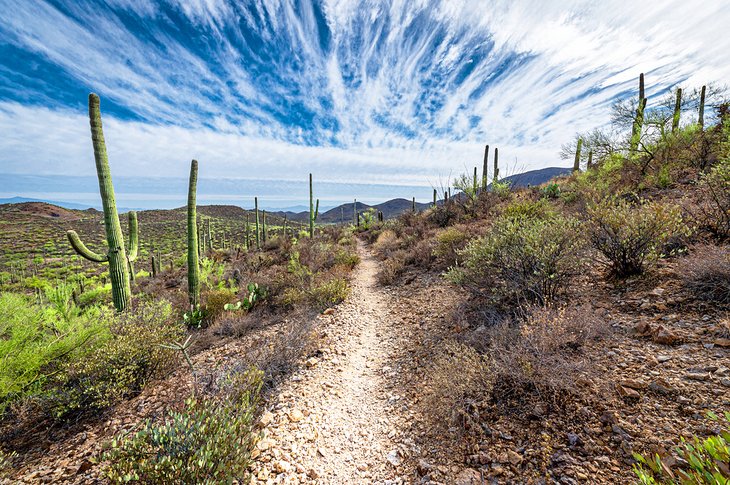
Tucson Mountain Park is home to the Arizona-Sonora Desert Museum and combining a visit to both allows you to both see and learn about this fascinating desert landscape. The park covers about 20,000 acres of Sonoran Desert landscape, just west of Tucson. You'll find an extensive trail system for hiking, biking, and horseback riding, although many people come here simply to see the museum, and enjoy the sunsets.
Tucson Mountain Park abuts the west section of Saguaro National Park, and you can easily combine a visit to both parks. Mountain lions and bobcats, along with a host of other wildlife, live in the park, although some of these tend to frequent the most remote areas.
This park is also home to one of the best campgrounds in the Tucson area, the well-maintained Gilbert Ray Campground.
Address: 8451 West McCain Loop, Tucson, Arizona
El Presidio Historic District
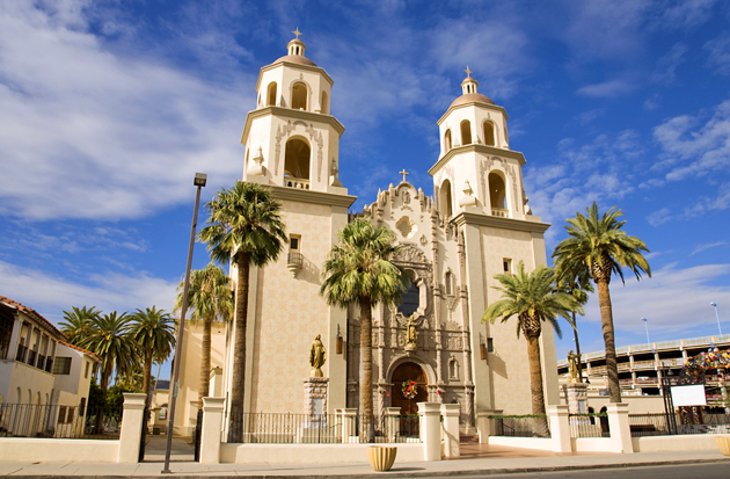
History upon history resides in the El Presidio Historic District, one of the oldest inhabited sites in the USA.
The area was once inhabited by the native Hohokam tribe, and in 1775 became the site of a Spanish military fort that would become the City of Tucson. What visitors see today is a mix of Spanish-Mexican and Anglo-American architecture, along with beautifully restored adobe houses.
One of the main tourist attractions is the Old Town Artisans, a restored 1850s marketplace. It includes an entire city block of galleries and stores all set in unique buildings. The stores offer selections of art, jewelry, crafts, home décor, and other items by artists from Tucson and around the state. Other items you can find here include pottery, paintings, metalwork, photography, Native American wool rugs, and carvings.
You can stop for a meal at El Charo Café, which claims to be the oldest continuously operating family-owned Mexican restaurant in the United States. The café also boasts being the place where the chimichanga, a deep-fried burrito, was invented.
Enjoy Tucson's Best Hiking Trails
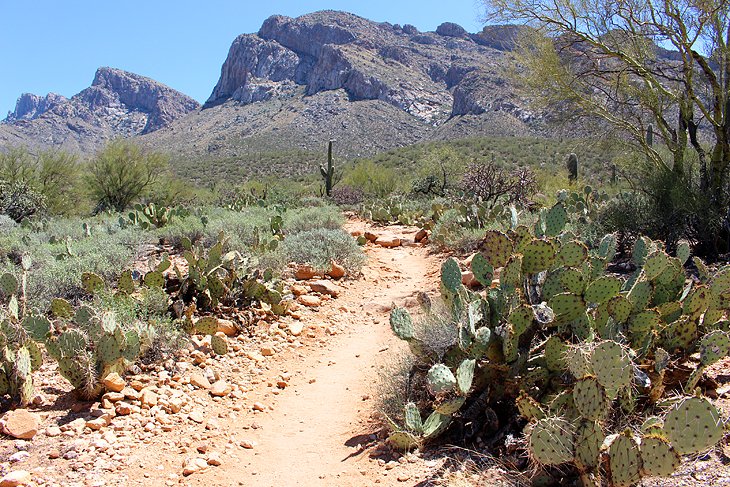
The mountains and beautiful landscape of the Sonoran Desert make Tucson a great place for lacing up your hiking boots and heading out on the trails.
Whether you are looking for an aggressive hike to the top of a mountain or a simple wander through the cacti to see birds and other wildlife, you can find trails for all abilities, and hikes to suit your mood. Spring is a particularly wonderful time for hiking in Tucson, when the wildflowers come into bloom, and the desert turns a vibrant green.
One of the most popular hikes is Seven Falls Trail in Sabino Canyon Recreation Area, where you can hike up to a set of natural pools and even go for a dip. Also worth checking out is the Sutherland Trail, where you can opt for a long or short hike.
If you just want a short stroll to experience nature, head to the Valley View Overlook Trail in the west section of Saguaro National Park. For more details on these and other hikes, see our article on the best hiking trails in Tucson.
Hike, Bike, or Camp at Catalina State Park
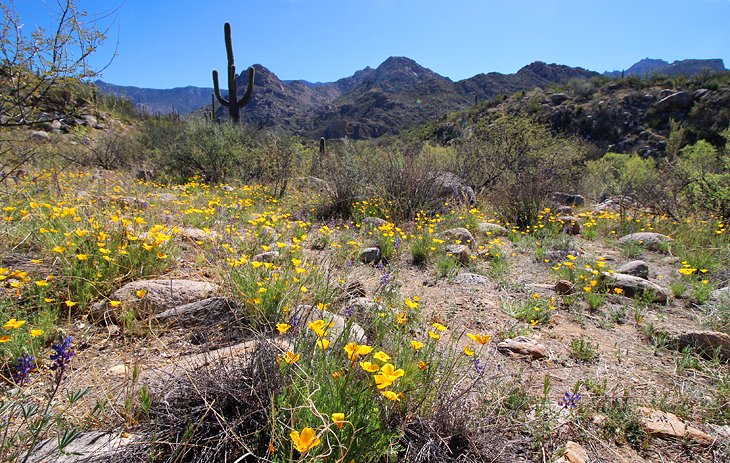
Catalina State Park, just north of Tucson, is a desert region with picnic areas, as well as good hiking, mountain biking, and equestrian trails.
One of the best hikes in the park is the 10.8-mile Sutherland Trail, which can be done in part or in full. You have a good chance of spotting wildlife. This park is also home to some of the best camping in the Tucson area.
Visitors also come to the park to see the Romero Ruin archeological site. A walking trail, less than one mile in total, takes you through the desert, past the remains of a Hohokam tribal village, which was occupied between 500 CE and 1450.
In the 1800s, Francisco Romero used portions of the abandoned village to create a homestead. The remains of several structures, which were built over the old site, still stand.
Address: 11570 North Oracle Road, Tucson, Arizona
Tohono Chul
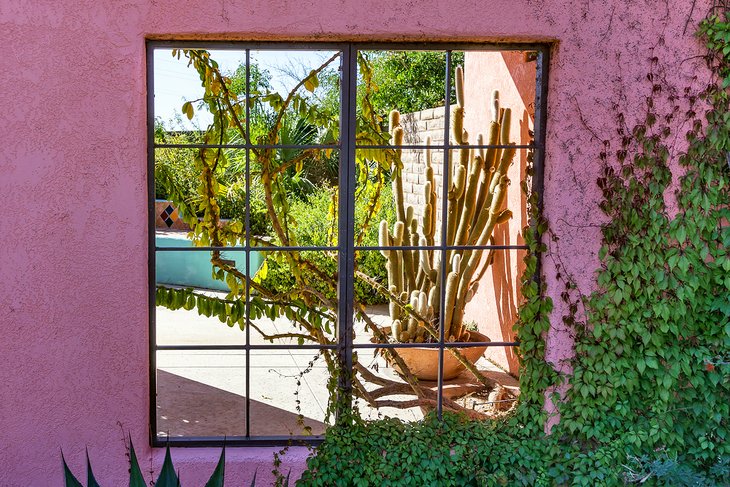
Lesser known than some of the larger gardens and museums in Tucson, the Tohono Chul botanical gardens are well worth seeking out.
Spread out over 49 acres are a wonderful collection of plants from the Sonoran desert. Over 500 different species are on display. One of the highlights is the Cereus plant, which only blooms at night.
Eight different outdoor exhibits are thoughtfully laid out around the garden and range from a desert palm oasis right through to a wall highlighting the geology of the area. Two walking trails wind their way through the southern section of the garden.
In addition to all the natural attractions, several permanent artwork collections are on display from artists including Mark Rossi, Fred Borcherdt, and Ned Egan.
University of Arizona
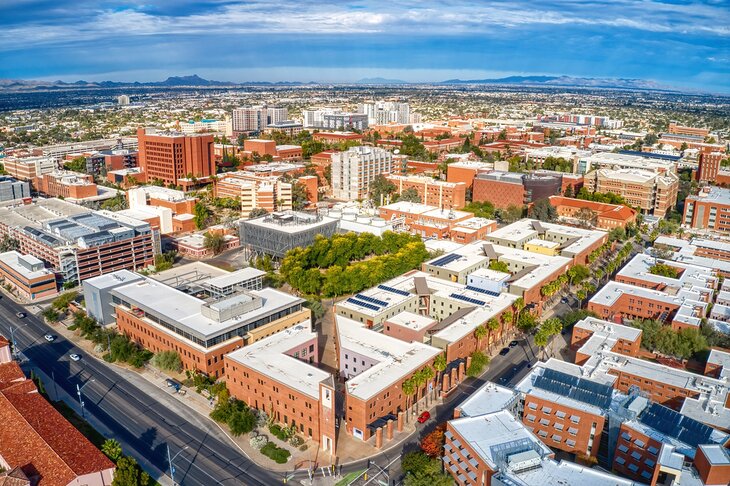
The University of Arizona in Tucson is home to the impressive Arizona State Museum, Mineral Museum, Center for Creative Photography, University of Arizona Museum of Art, the Flandrau Science Center, and the Campus Arboretum. Visitors can spend a couple of hours or a couple of days seeing the sights on this campus.
With its large archeological collection, the Arizona State Museum documents 10,000 years of Indian cultural history. Established in 1893, it is the oldest and largest anthropology museum in the Southwest of the United States.
Exhibits include the largest vessel collection of Southwest Indian pottery, a comprehensive Hohokam artifact display, one of the top Navajo textile collections, and hundreds of Mexican folk masks.
While the Arizona State Museum is the main attraction on the campus, those with more time or other interests will want to check out some of the other facilities. The Mineral Museum, with a vast collection of gems, minerals, and meteorites from the USA and around the world, has a distinct focus on minerals from Arizona and Mexico.
The Center for Creative Photography, created in 1975 by the one-time University of Arizona President John P. Schaefer and renowned photographer Ansel Adams, features tens of thousands of photos and focuses on the history of North American photography.
The University of Arizona Museum of Art in Tucson, also worth a visit, features a large collection of works, from old masters through to contemporary art.
See the Animals at Reid Park Zoo
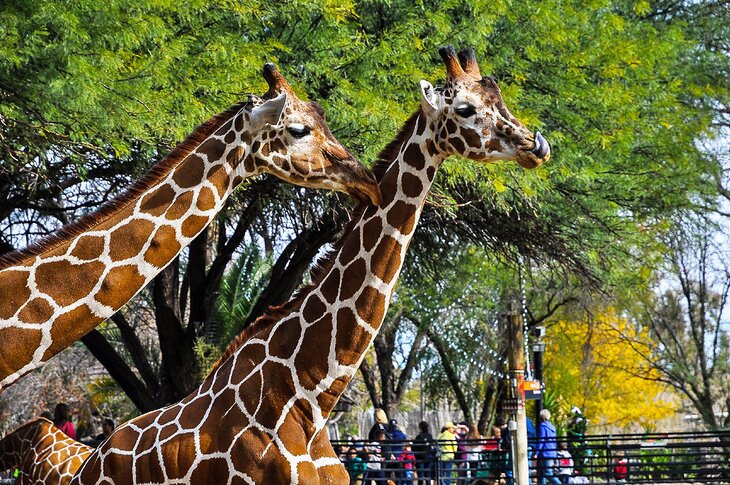
The Reid Park Zoo is a relatively small zoo with a surprisingly good collection of exotic animals. It houses such favorites as elephants, bears, lions, tigers, giraffes, and many others. This is one of the most popular family attractions in Tucson.
The zoo is laid out in a large loop, with three smaller loops, including Expedition Tanzania, Tropical Trail, and the Lee H. Brown Family Conservation Learning Center.
One of the best interactive experiences available at the zoo is the Giraffe Encounters. For a small fee, you can hand feed a giraffe. Other attractions are the Reid Park Zoo Express train, a wet play area, and changing daily activities.
Plans are in place to begin construction of a brand new sloth habitat, and it's hoped that the workers will move faster than the animals.
Address: 3400 Zoo Court, Tucson, Arizona
Go Underground at Colossal Cave Mountain Park
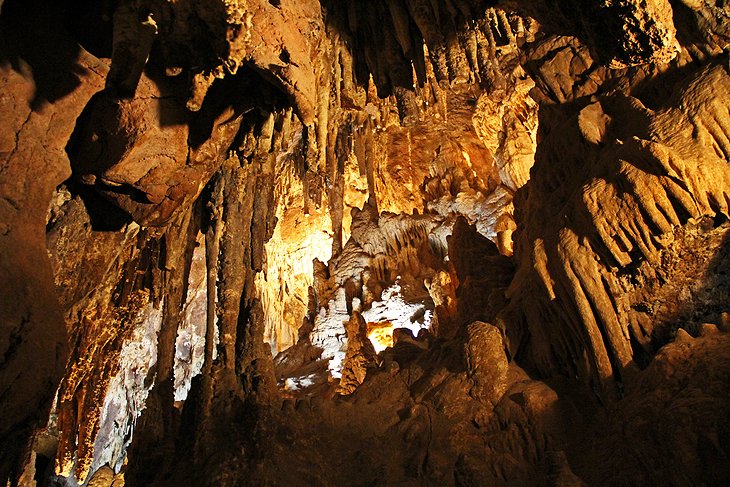
Just a short drive east of Tucson, in nearby Vail, Colossal Cave is one of the largest dry caverns in the United States.
Parts of it have yet to be explored, and local legend says the loot from an old stagecoach robbery is still buried somewhere inside. Three different tours are available: Classic, Ladder, and Wild. Deciding on which one to take depends on your level of adventure and fitness.
The 2,400-acre park also features a museum, butterfly garden, guided horseback riding, wagon rides, as well as hiking and horse trails. Basic camping is also available but there is no electricity or water on the individual sites.
Address: 16721 East Old Spanish Trail, Vail, Arizona
Walk up Tumamoc Hill
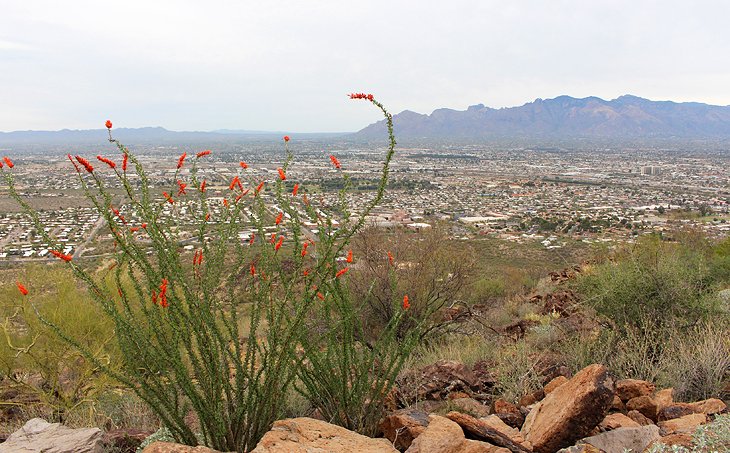
Looking for a little activity while you're visiting Tucson? Located right in the city, Tumamoc Hill offers amazing views in exchange for a bit of effort.
A wide, paved path winds its way to the top of the hill. The incline is gentle at the start and then gets slightly more difficult as you ascend, but most anyone can make it to the top.
Ideal for solo travelers, this walk is a very popular local thing to do and you'll find yourself on the trail with walkers, moms pushing strollers, family groups, and joggers. Along the way are benches and interpretive plaques explaining the flora and fauna of the area. The name Tumamoc comes from the Tohono O'odham language and references a horned lizard.
The trail is 3.1 miles return. The hill is located in the southeast of Tucson, and free parking is available along the street at the trailhead. Some navigation systems falsely indicate that you can drive to the top, but this is not the case—just park on the street by the gate.
St. Augustine Cathedral
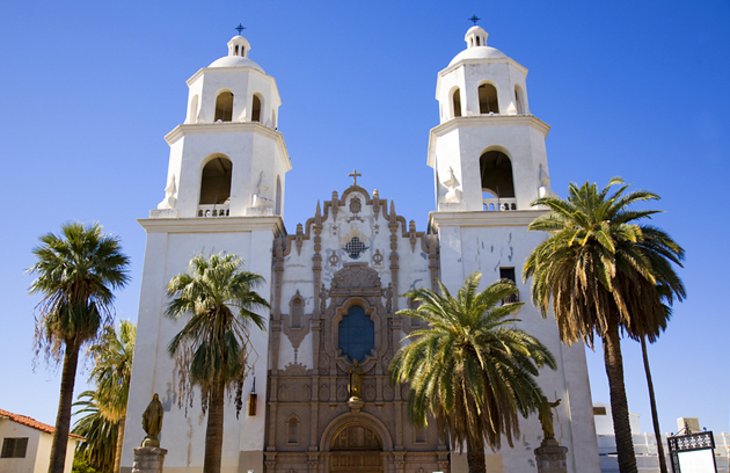
The St. Augustine Cathedral was designed in Mexican Baroque architectural style. Built in 1896, the cast stone façade was completed in 1928 and is similar to the Cathedral of Querétaro in Mexico. The façade and towers are all that remain of the original structure after the cathedral was rebuilt in the late 1960s.
If you look carefully at the façade, you'll be able to see the intricate coat of arms of Pope Pious XI, along with carvings of various native desert plants. Just inside the door hangs an impressive crucifix said to date from the 12th or 13th century. The cathedral is free to visit, but donations are always appreciated.
Address: 192 South Stone Avenue, Tucson, Arizona
Go Downhill Skiing
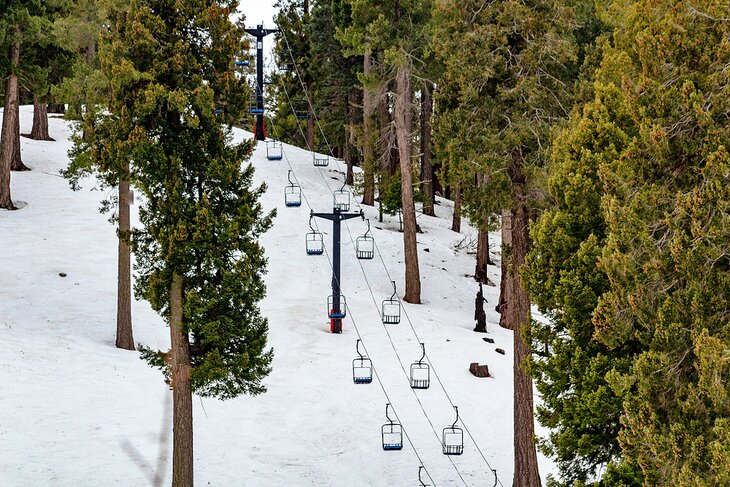
Yes, you read that right. Downhill skiing is a popular thing to do in Tucson. It is a little-known fact that Arizona is actually a pretty good place to go downhill skiing, and Mount Lemmon Ski Valley is one of the three best ski resorts in Arizona.
This ski hill is located in the Coronado National Forest in the Santa Catalina Mountains, just under an hour and a half from downtown Tucson. It's an old-school kind of place, with a vintage double chair that slowly makes its way up 950 feet of vertical to the top of the hill.
You'll have lots of time to chat and soak up the scenery along the way. In the base area, another smaller double chair and a surface lift are mostly used by the beginners on the hill.
Hadn't thought of bringing your ski gear to Tucson? That's understandable, and fortunately "the Lemmon" has you covered with full rentals available. Lessons are also available from the Brian Ashby Ski school.
One must-do when visiting is spending time on one of the best patios in Arizona. Grab a table at the Iron Door Restaurant and soak up the views of the desert floor below.
Mount Lemmon Ski Valley generally opens for skiing in mid to late December and stays open until late February or early March. The resort depends on big storm fronts for its snow, so if the fronts are early or late, the season opening date can be a moving target.
International Wildlife Museum
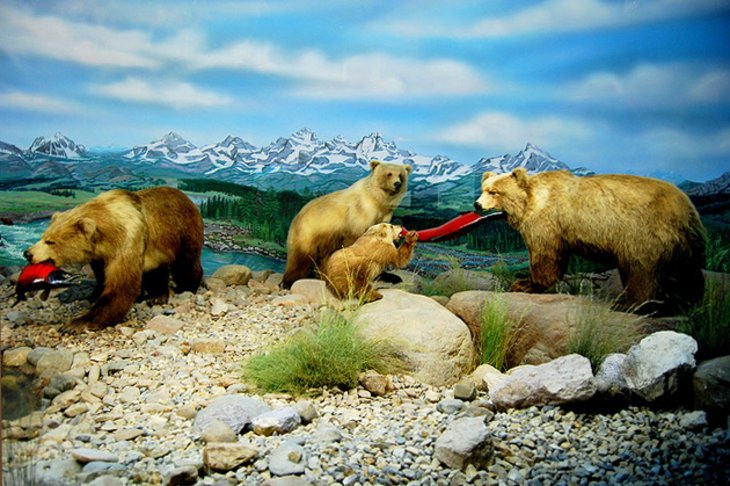
The International Wildlife Museum in Tucson features more than 400 species of animals and insects from across the globe.
The museum is home to preserved specimens, some of which are rare and over 100 years old. Dioramas allow visitors a close-up look at animals and their natural settings. The museum offers a chance to learn about animal behavior, habitat, and much more.
The wildlife theater shows feature-length, animal-themed nature movies on the hour, and admission is free with your paid ticket to the museum.
Address: 4800 West Gates Pass Road, Tucson, Arizona
Take the Kids to Tucson Children's Museum
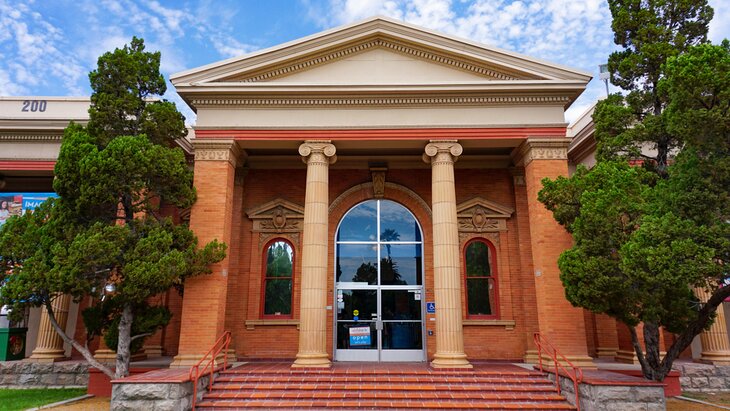
Families will enjoy this museum. The hands-on, interactive exhibits include a variety of topics, from the arts and sciences to nature and construction.
Children of all ages can find something to entertain themselves with in the 13 different permanent exhibits, including a giant nose in Bodyology, a massive magnetic wall in Gravity, and drums and other instruments in the Music Garden.
The building that the Tucson Children's Museum is housed in is a wonderfully restored classic from 1901 that was the former Carnegie Library, which was designed by architect Henry Trost.
Address: 200 South 6th Avenue, Tucson, Arizona
More Related Articles on PlanetWare.com
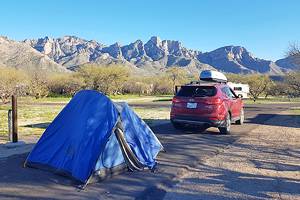
Camping in Tucson: If you are considering camping in the Tucson area, either in a tent, trailer, or RV, you'll find some wonderful places to set up. Camping among the saguaros and desert wildlife is an experience campers won't want to miss. For details, see our article on the best campgrounds near Tucson.
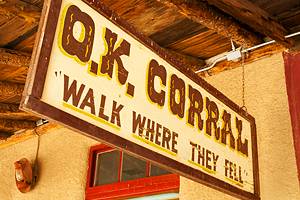
Things to Do Nearby: One of the most popular places to visit from Tucson is the historic town of Tombstone. Beyond Tucson, in the mountains near the Mexico border is the old mining town of Bisbee, now a trendy small town, where you can be sure to get a great cup of coffee. You can combine both of these towns to make an excellent day trip from Tucson.
